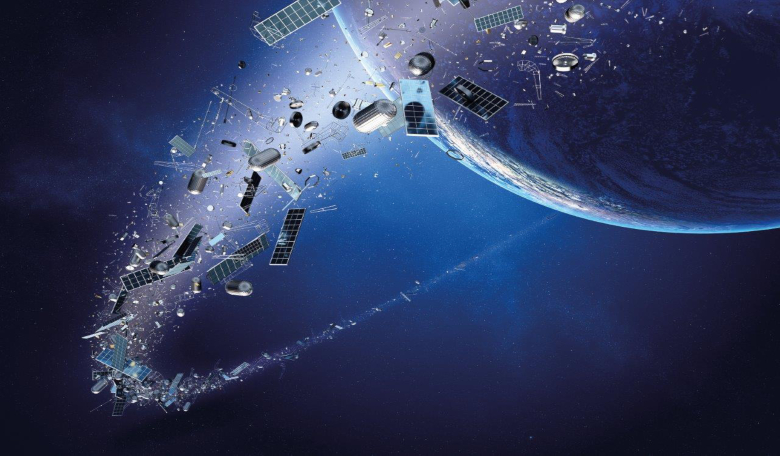Astronomers have become increasingly worried over the past few years by the growing number of artificial objects in orbit around Earth and the effects they will have on observing the Universe around us. And now they have good cause to be, as a new study published this week suggests that objects such as satellites are brightening the night sky significantly more than previously understood; so much so there appears to be hardly anywhere left on Earth that is free from light pollution.
Crowding the night skies 160 kilometres above Earth and stretching all the way to the 35,786 kilometre ‘border’ defining geosynchronous orbits, is a region of space populated with around 3,372 satellites along with many tens of thousands of pieces of space debris.
Worryingly for many, this number of satellites is set to rise significantly as organisations around the world look to deploy hundreds of thousands more in huge mega-constellations that aim to provide broadband coverage to large swathes of the globe.
Although companies such as SpaceX have recently tried to limit the amount of light reflected off their Starlink satellites with various measures such as lofting them to high orbits or adding visors to block sunlight, the sheer number of objects currently in space is already cause for concern say researchers behind a new study.
According to the new analysis, the overall brightness of the night sky could have increased by more than 10 percent above natural light levels across a large part of the planet; a figure that exceeds a threshold set by astronomers over 40 years ago to define “light polluted” locations.
"Our primary motivation was to estimate the potential contribution to night sky brightness from external sources, such as space objects in Earth's orbit," said Miroslav Kocifaj of the Slovak Academy of Sciences and Comenius University in Slovakia, who led the study. "We expected the sky brightness increase would be marginal, if any, but our first theoretical estimates have proved extremely surprising and thus encouraged us to report our results promptly."
Rather than modelling the effect of light from individual objects on the night sky, the team’s work looked at the bigger picture by modelling the impact of all known space debris such as spent rocket stages and decommissioned satellites.
This included extrapolating data on the number and size distribution of space objects from the mid-1990s onwards to calculate how reflective these objects would be on average.
As the human eye sees the combined effect of many such objects in the sky, rather than discrete points of light like a telescopes or sensitive camera, this would give an indication of the diffuse night sky brightness component.
That component turned out to be a lot brighter than originally thought.
“Unlike ground-based light pollution, this kind of artificial light in the night sky can be seen across a large part of the Earth’s surface,” explained John Barentine, Director of Public Policy for the International Dark-Sky Association and a study co-author. “Astronomers build observatories far from city lights to seek dark skies, but this form of light pollution has a much larger geographical reach.”
Unfortunately, say the team headed by Miroslav Kocifaj of the Slovak Academy of Sciences and Comenius University in Slovakia, this situation is likely to get worse as more and more satellites are deployed in the next decade.
“Our results imply that many more people than just astronomers stand to lose access to pristine night skies,” Barentine said.
As organisations work to understand the impact of mega-constellations on optical and radio astronomical facilities, the researchers hope that their work will help the ongoing dialog between satellite operators and astronomers concerning how best to manage the orbital space around the Earth.
“This paper may really change the nature of that conversation”, Barentine concluded.











